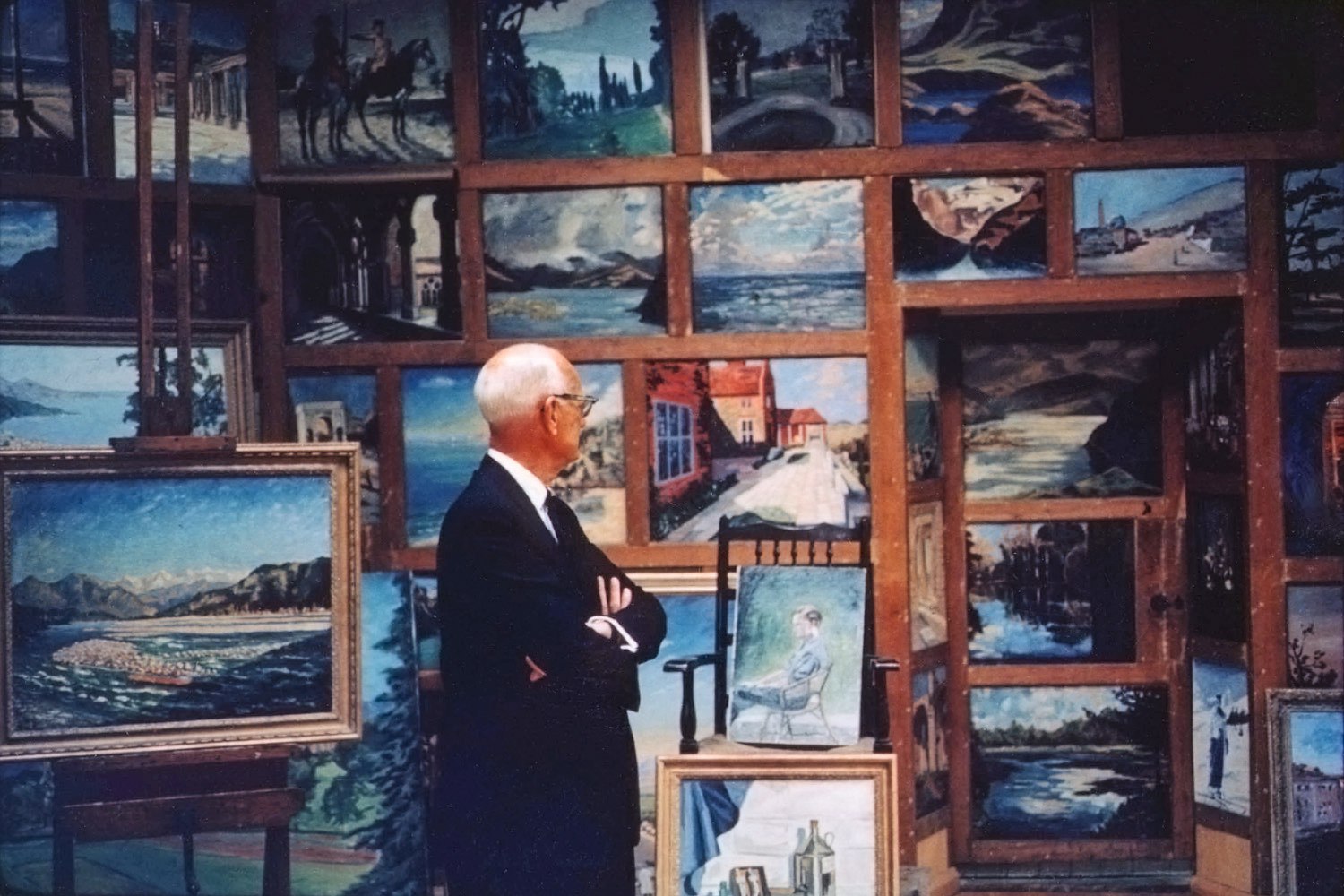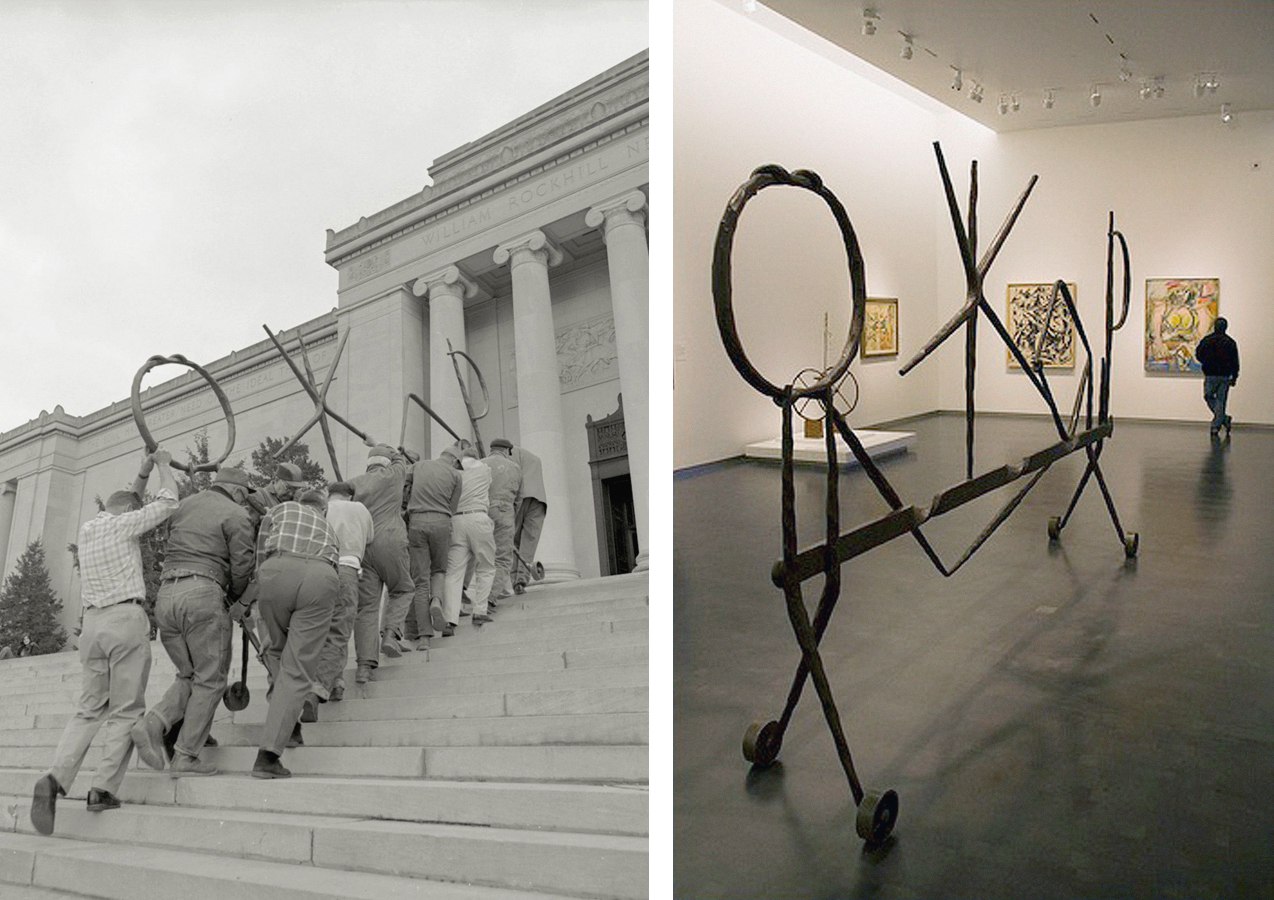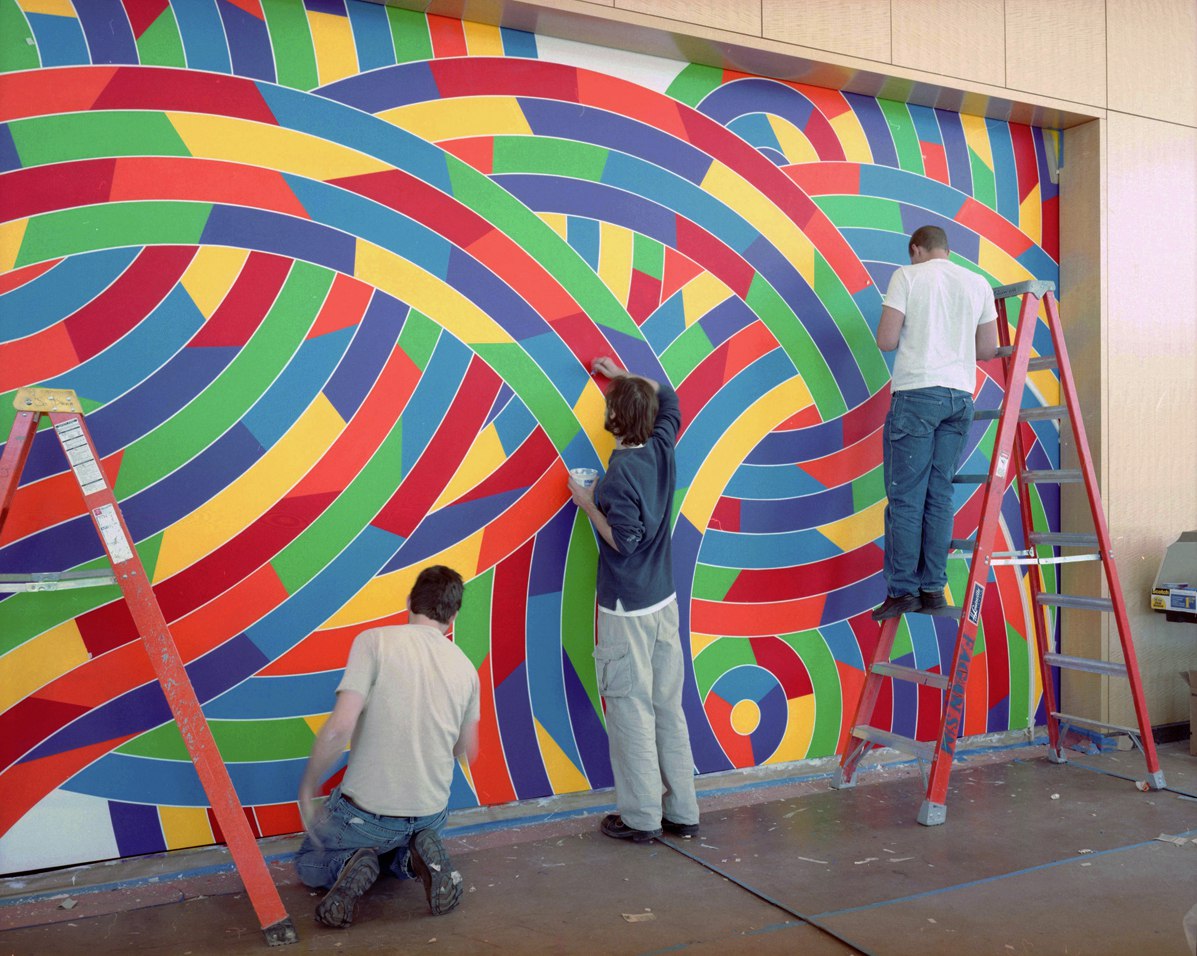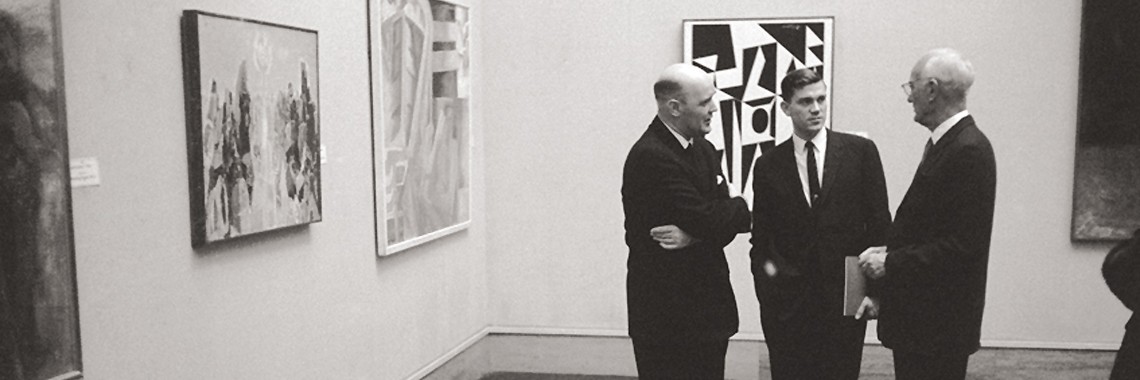The Hallmark Art Collection began more than six decades ago, long before the idea of corporate collecting became an accepted and established practice. The company’s focus on contemporary art aligned naturally with its products and large creative staff. As early as 1948 the company’s founder J.C. Hall envisioned a series of competitions and traveling exhibitions to encourage artists and broaden public tastes for contemporary art, a mission that would ultimately create more sophisticated consumers for the company’s artistic products. The resulting series of International Hallmark Art Awards held between 1949 and 1960 garnered widespread recognition for the company’s groundbreaking patronage and lent further prestige to a trusted brand. Purchase awards from those competitions, which included works by modern masters such as Edward Hopper, Charles Sheeler, and Andrew Wyeth, formed the nucleus of what is now a dynamic and growing collection of international modern and contemporary art. Unlike other corporate collections that followed in the United States, J.C. Hall was not an art collector himself. However, he felt it crucial that his employees enjoy the benefit of museum quality art in the workplace.

J.C. Hall on a visit to Sir Winston Churchill’s painting studio at Chartwell, c. 1960.
These early purchases were enhanced with commissioned works by such prominent contemporary artists as Salvador Dali, Norman Rockwell, and Saul Steinberg, each of whom were under contract by Hallmark at the height of their fame. J.C. Hall also acquired paintings by Grandma Moses and Sir Winston Churchill for public display, rather than for the purpose of reproduction. With the acquisition of Springbok Company in 1967, Hallmark garnered more original works created for jigsaw puzzles by Dali and other popular artists of the era. In subsequent years the company continued to acquire significant pieces by groundbreaking artists such as Alexander Calder, Sol Lewitt, Louise Nevelson and Kenneth Snelson for its Kansas City campus. These highly visible works have become landmarks for the city at large and continue to serve as benchmarks of quality for further acquisitions.
Over the years the collection and its related public programs and exhibitions have gained accolades as a model for the corporate support of the arts. Loans and donations of art from the Hallmark Art Collection to local institutions and non-profit organizations have enhanced the already significant support provided by the Hallmark Corporate Foundation to local arts agencies. In Kansas City, the Nelson-Atkins Museum of Art has been a long-term beneficiary of the collection and now includes postwar and contemporary art donated from the Hallmark Art Collection, including important works by Pierre Alechinsky, David Smith and Sol Lewitt. Such gifts from the corporate collection are in addition to the ongoing acquisitions funded by the Hall Family Foundation and the personal collection of Chairman Donald J. Hall, son of J.C. Hall and his wife Adele. The Donald J. Hall Sculpture Park at the museum is a public sign of Mr. Hall’s extraordinary private support for the institution.

L to R: David Smith’s modern masterwork Wagon III (1964) entering the Nelson-Atkins Museum of Art on loan and as it now stands in the museum’s permanent collection galleries.
In 1965 Hallmark extended its association with progressive art through the founding of the Hallmark Gallery in New York City. Sited at the corner of Fifth Avenue and 56th Street, the Gallery presented changing exhibitions of contemporary art and became an early venue for the serious consideration of photography as a fine art form. Among the early exhibitions was the work of Harry Callahan, the first American photographer that Hallmark acquired in depth. In addition to the growing assortment of painting, sculpture, prints, and ceramics acquired for installation throughout Hallmark’s workplaces, Hallmark’s first full-time curator, Keith F. Davis, continued to build a parallel photographic collection. In the succeeding years he curated numerous traveling exhibitions, supplemented by scholarly publications on the history of photography.
In 2005, Hallmark, in partnership with the Greater Kansas City Community Foundation, donated the entire collection to the Nelson-Atkins Museum of Art. The 6,500 photographic works by 900 artists represent a comprehensive overview of the entire history of the medium from 1839 to the present. Now Senior Curator of Photography at the Nelson-Atkins, Davis continues to direct the collection and related exhibitions at the museum’s Hallmark Photographic Collection Gallery.

Sol Lewitt’s Wall Drawing #1118 , Whirls, commissioned by Hallmark, during installation at one of its Crown Center properties in 2004.
The Hallmark Art Collection continued to grow under the leadership of Curator Joe Houston, who worked at Hallmark from 2008-2018. His acquisitions ranged from early twentieth century abstract painting to recent new media works evoking the post-digital perspective. Now numbering more than 3,800 works by 1,200 artists working across all media, the Hallmark Art Collection adorns the company’s headquarters, manufacturing plants, distribution centers, offices and subsidiaries globally and is continually shared with the larger public through exhibitions and museum loans.
Today the collection serves as a testament to J.C. Hall’s foresight and to the crucial role that leading-edge art can play in an innovative enterprise. Hallmark continues to share the art with the community through its Visiting Artist programs and public installations of art throughout the Crown Center neighborhood. The recently inaugurated Hallmark Art Collection Gallery at the Hallmark Visitors Center is a prominent venue for rotating exhibitions from the collection. And the new website HallmarkArtCollection.com now provides unprecedented access to this corporate collection and the manifold stories behind the art.
To learn more about the cultural philanthropy of Hallmark Cards, see the company’s website on Corporate Citizenship.
More information about the private philanthropy of Hallmark’s owners can be found at the website for Hall Family Foundation.
